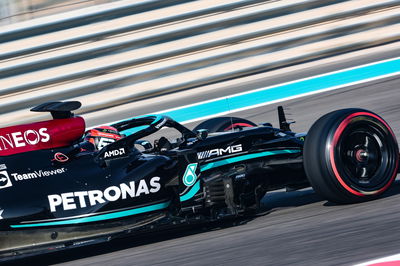Mercedes: New F1 fuel biggest engine change since 2014

Although they have been dwarfed by the major shake-up to the technical regulations for 2022, F1’s power unit rules have also been changed for the new season.
Engine performance development has been frozen in place until the next generation of power units that are expected to arrive in 2026, while a similar performance-based freeze on electrical components will be implemented midway through this year. As a result, only reliability-based updates will be permitted.
On top of this, F1's power unit manufacturers have had to deal with a switch to a new E10 fuel as part of the championship's wider aim to become net zero carbon by 2030. Thomas stressed the importance of this change should not be underestimated.
“When most people are talking about the 2022 regulations, they’re talking about a brand new car, and what the influence of that brand new car is going to be, but there are a couple of changes on the PU side, and they’re quite important,” HPP managing director Thomas said in Mercedes’ latest video.
“The change this year to go into the E10 is probably the largest regulation change we've had since 2014,” he added.
“So it was a sizeable undertaking to make sure that we really developed that fuel, and the number of candidates that we had, the single cylinder running, the V6 running, it shouldn't be underestimated how much work that took.
“The 2022 car is very, very different. We know the aerodynamics are different, and from all of the things we’ve been told, we believe that the car will be doing slightly different things and the requests from the drivers will be different as they go through the corners compared to previous years.
“We’ve got simulations, we’ve done all our calculations and we’ve modified the engine and the way that the engine drives in order for us to be ready to react for when the driver puts the power on, perhaps in a slightly different way at a different time.”
The requirement for fuel to be made up of sustainable ethanol provided the biggest challenge, according to Thomas.
“There have been bio components in the fuel throughout the hybrid era,” he explained. “What we had was a requirement to have 5.75% by volume of bio components.
“The change this year is that percentage has gone up, it's gone up to 10%. And also, instead of it being open what bio components you use, you've had to use ethanol.
“So the change to the bio content to being ethanol, what that means is that the engine is going to react slightly differently to the fuel. So some areas of performance we're really, really happy with, and other areas where honestly we're less happy.
“And what we have to do is change the fuel where we can, and change the hardware of the PU where we can, in order to maximise the effects of the things we do like, and minimise the effects of the things we don't.”












